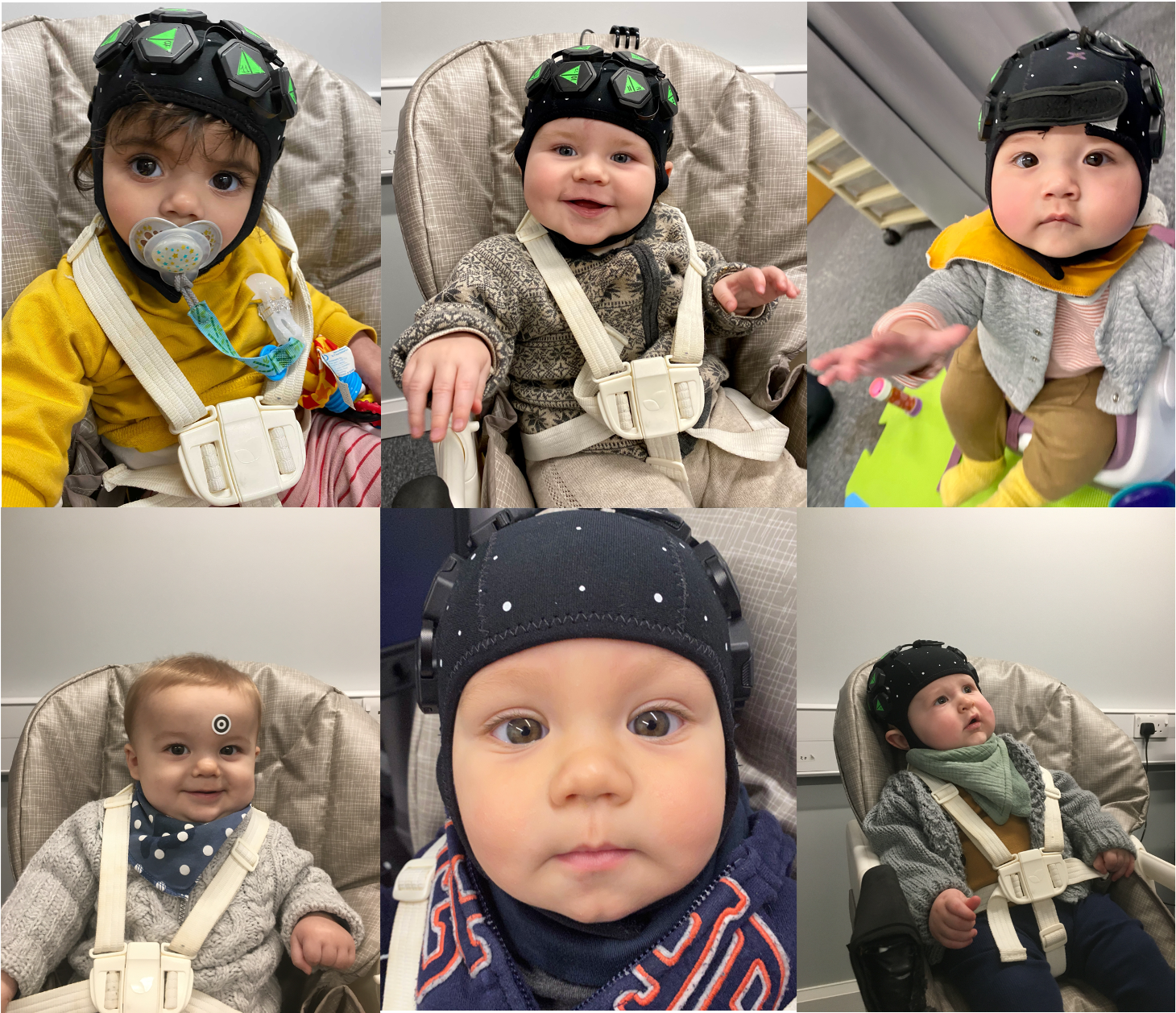Eye-tracking
Eye-tracking has been used for many years to understand attention and perception in infancy and childhood. The eye-tracker allows us to see exactly where the child is attending on a screen or in a live scene.
Eye-tracking uses non-visible infra-red light to create reflections on the cornea and pupil of the child’s eyes. A camera in the eye-tracker detects these reflections and the computer can calculate the exact position of the eyes on the display that the child is watching. The intensity of the infra-red light is very small and is therefore harmless.
There are two types of eye-trackers. A screen-based, or remote, eye-tracker looks like a normal computer screen but it emits infra-red light. Once your child is seated on your lap about 60cm from the screen, we “calibrate” the eye-tracker. To do this, we present short animations on different parts of the screen and wait for your child to look at them before taking a measurement. This will tell the machine the distance between the child’s eyes (which varies from person to person). Sometimes we may need to do the calibration a few times, in case the child has moved or not looked at one of the calibration points. Once we have good calibration, we’re good to go! We will show your child pictures or videos until the study is finished or your child becomes bored or fussy. You can ask us to take a break or stop at any time.
A head-mounted eye-tracker can be used to record eye movements in natural situations, such as when you and your child are playing with each other. For this, two small cameras are fitted on a small, very light hat which we place on the child’s head. One of these cameras records the reflection on the child’s eyes while the other camera records what the child is looking at. While we are putting on the hat, we will play with your child to keep her/him distracted. Generally, children are happy to wear the hat, but if your child becomes fussy at any point, we can take the hat off straight away.
Check this out to hear Rhys provide more information on Remote Eye Tracking!
Check this out to hear Hana speak about Head-Mounted Eye Tracking!
fNIRS (functional Near-Infrared Spectroscopy)
fNIRS is a non-invasive technique that uses near infrared light to indirectly assess neural activity by measuring changes in blood oxygenation levels. Emitters and detectors of near-infrared light are fitted in a cap worn by the infant, forming channels that index activity occurring in the area below the channel. These emitters are like tiny torches and are completely harmless to your child. The light is able to measure oxygen levels in different parts of the brain, which change depending on brain activity. The system is completely safe and has been designed for and used with infants in many other studies. Typically, increases in neural activity are accompanied by increases in blood oxygenation levels. fNIRS has proven to be a great technique for research with infants since it is resilient to infant motion and it is easy to secure on the infant’s head, producing minimal distress. Importantly, by using this method we have only access to cortical activity that is relatively close to the surface of brain.
EEG (Electroencephalogram)
The neurons in our brain communicate to each other by sending electrical currents. The EEG technique is able to record this electrical brain activity by means of sensors fitted in a cap worn by the infant while he or she is performing a task. The electrical activity recorded by the sensors reflects the neural and cognitive demands associated with the performance of the task. EEG is ideal for infant testing because it is non-invasive, and is easy to use.
Check this out to hear Adam provide more information on EEG!
Behavioural Measures
We also conduct structured play activities to assess infants’ linguistic skills, fine motor skills, or visual receptive skills. Some of the behavioural assessments involve parent-child interactions for 5 to 10 minutes. Sessions tend to be video- and audio-recorded for later analysis.
Check this out to hear Malen talk about a behavioural measure called the Mullen!
Check this out to hear Malen talk about a behavioural measure called the LENA System!
Motion Capture
We use a technique called Motion Capture to accurately track the movement that babies and children make. This technique involves your child wearing a pattern of markers, attached using an elasticated bracelet or hat, on their wrists, feet and head which are highly reflective so that when they make movements we can accurately see whether they are moving in space. We do this by using high definition cameras that use infrared light to measure the relection from these markers in the x, y, and z coordinates.
Check this out to hear Sinead provide more information on Motion Capture!


